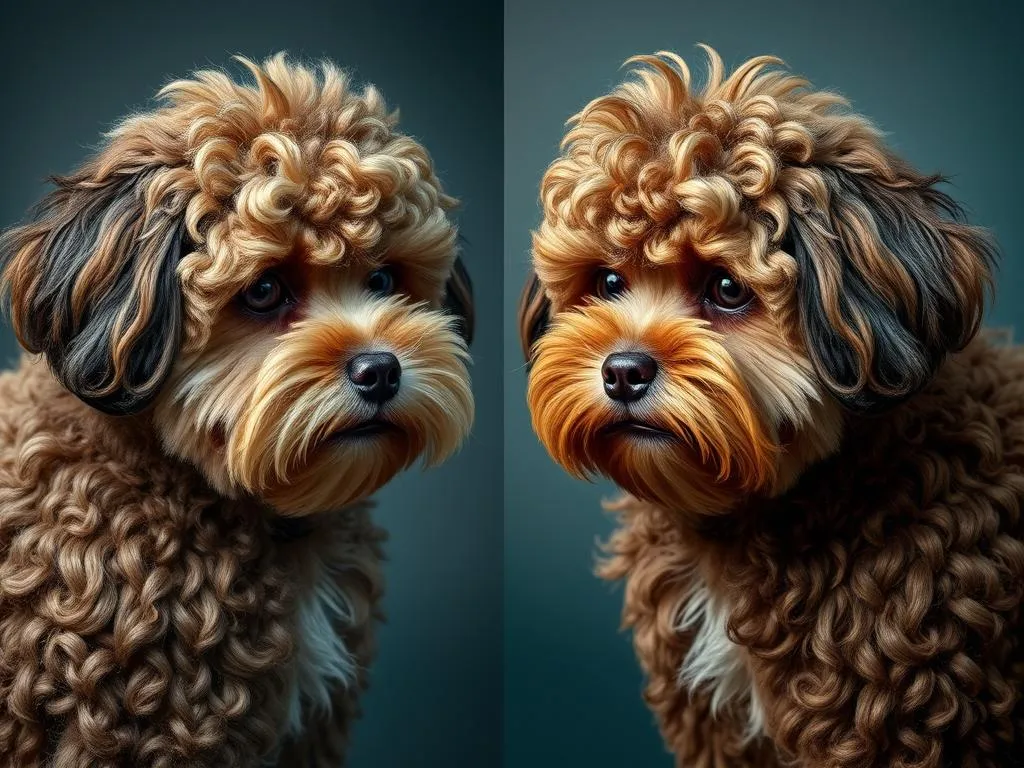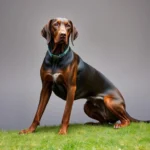
Hybrid dog breeds have surged in popularity over the last few decades, and for good reason. They often combine the best traits of their parent breeds, creating unique companions that appeal to a variety of dog lovers. Among these charming hybrids are the Malshi and the Maltipoo, both of which have garnered considerable attention. Understanding the differences between these two breeds can help potential dog owners make an informed decision.
Understanding Hybrid Dog Breeds
Definition of Hybrid Dog Breeds
Hybrid dog breeds, also known as designer breeds, are created by crossing two purebred dogs to achieve specific traits. The goal of hybridization can vary from enhancing physical appearance to improving health and temperament. The Malshi, a mix of the Maltese and Shih Tzu, and the Maltipoo, a combination of the Maltese and Poodle, are prime examples of this trend.
Benefits of Hybrid Breeds
One of the most significant advantages of hybrid breeds is hybrid vigor, which refers to the improved health and vitality that often comes from breeding two different purebreds. This can lead to a lower incidence of genetic disorders common in purebreds. Additionally, hybrid dogs often exhibit unique characteristics that make them especially appealing, such as distinct coat types and temperaments.
Overview of the Malshi Breed
Origin and History
The Malshi is a delightful mix of the Maltese and Shih Tzu, both of which have rich histories. The Maltese is one of the oldest dog breeds, known for its affectionate nature and stunning white coat. The Shih Tzu, on the other hand, was bred as a companion dog for Chinese royalty, boasting a charming personality and a luxurious coat. The combination of these two breeds has resulted in the Malshi, which has become a sought-after companion for families and individuals alike.
Physical Characteristics
Malshis are small dogs, typically weighing between 6 to 12 pounds and standing about 8 to 12 inches tall. Their coats are often soft and fluffy, resembling that of their parent breeds. Color variations can include white, cream, brown, and even black or gray, often with combinations that reflect the parent breeds.
Temperament and Behavior
Malshis are known for their friendly and affectionate temperament. They are social dogs that thrive on human companionship and can be quite playful. Their gentle nature makes them great with children and other pets, although early socialization is essential to ensure they are well-adjusted.
Care and Maintenance
Caring for a Malshi involves regular grooming due to their long, luxurious coats that can mat easily. Daily brushing is recommended to keep their fur looking its best. They require moderate exercise—short walks and playtime are usually sufficient. Health considerations for Malshis include potential eye problems and dental issues, so regular veterinary check-ups are crucial.
Overview of the Maltipoo Breed
Origin and History
The Maltipoo is a delightful blend of the Maltese and Poodle. The Maltese has a long history as a beloved companion, while the Poodle is known for its intelligence and hypoallergenic coat. Bred primarily for companionship, the Maltipoo has quickly become a favored choice for dog lovers seeking a friendly and adaptable pet.
Physical Characteristics
Maltipoos typically weigh between 5 to 20 pounds and stand about 8 to 14 inches tall, depending on whether a toy or miniature Poodle is used in the breeding. Their coats can be curly or wavy, resembling a Poodle’s coat, and they come in a variety of colors, including white, apricot, and cream.
Temperament and Behavior
Maltipoos are known for their cheerful and affectionate personalities. They are intelligent and eager to please, making them relatively easy to train. Their friendly disposition makes them excellent companions for families, singles, and seniors alike. Like Malshis, early socialization is important for Maltipoos to develop into well-rounded dogs.
Care and Maintenance
Maltipoos require regular grooming to prevent matting and maintain coat health. A professional grooming session every few weeks, along with regular brushing at home, is advisable. They also need moderate exercise, such as daily walks and playful activities. Common health concerns for Maltipoos include hip dysplasia, dental issues, and patellar luxation, so routine veterinary care is essential.
Malshi vs. Maltipoo: Key Comparisons
Size and Weight Comparison
Both breeds are small, but there are some differences in their size and weight. The Malshi generally weighs between 6 to 12 pounds, while the Maltipoo can weigh between 5 to 20 pounds, depending on the size of the Poodle parent. This variability in the Maltipoo makes it versatile for different living situations.
Coat and Grooming Needs
When it comes to coats, the Malshi often has a softer, fluffier texture, while the Maltipoo’s coat can be curly or wavy. Both breeds require regular grooming to keep their coats healthy and free from tangles. The Maltipoo might shed less due to its Poodle lineage, which is often favored by those with allergies.
| Characteristic | Malshi | Maltipoo |
|---|---|---|
| Size | 6 to 12 pounds | 5 to 20 pounds |
| Coat Type | Soft and fluffy | Curly or wavy |
| Grooming Frequency | Daily brushing | Regular grooming |
| Shedding Tendency | Moderate | Low to moderate |
Temperament and Personality
In terms of temperament, both breeds are friendly and affectionate. However, Maltipoos may exhibit a higher level of intelligence and eagerness to please due to their Poodle parentage. This can make them slightly easier to train compared to Malshis, which may have a bit more stubbornness inherited from the Shih Tzu. Both breeds are great with children and other pets, but the Maltipoo might adapt slightly better to various living situations due to its versatility.
Health Considerations
Both the Malshi and Maltipoo can face health issues common to their parent breeds. Malshis may be prone to eye problems and dental issues, while Maltipoos can experience hip dysplasia and patellar luxation. The average lifespan for both breeds ranges from 12 to 15 years, emphasizing the importance of regular veterinary check-ups and preventive health care.
Choosing Between Malshi and Maltipoo
Lifestyle Considerations
When deciding between a Malshi and a Maltipoo, consider your living situation and lifestyle. If you live in a smaller apartment and prefer a slightly more compact dog, the Maltipoo might be the better choice due to its potential for a smaller size. Both breeds require attention, socialization, and moderate exercise, so ensure you can accommodate their needs.
Financial Considerations
The costs of purchasing and maintaining each breed can vary. Generally, Malshis can be found at a price range of $1,500 to $3,000, while Maltipoos may range from $1,000 to $3,500. Additionally, consider ongoing expenses such as grooming, food, and veterinary care, which can add up over time.
Personal Preferences
Ultimately, your personal preferences play a significant role in your decision. If you appreciate a dog with a more affectionate and playful nature, both breeds fit the bill. However, if you prioritize low-shedding and hypoallergenic qualities, the Maltipoo may be more suitable for your needs.
Conclusion
In summary, both the Malshi and Maltipoo offer unique traits and characteristics that make them wonderful companions. Understanding the differences in size, grooming needs, temperament, and health considerations can aid potential dog owners in making the right choice for their lifestyle. Whether you lean towards the fluffy charm of a Malshi or the intelligent playfulness of a Maltipoo, either breed will undoubtedly bring joy and love into your home.
Choosing a dog is a significant decision, and it’s essential to consider your lifestyle and the specific characteristics of each breed before making a commitment. With the right care and attention, both Malshis and Maltipoos can thrive as cherished family members.









